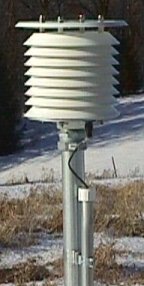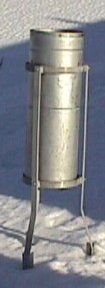
Have a interest in becoming a Cooperative Observer? Our office is in need of some in a few, specific areas. If you have an interest, or would like to learn more about the cooperative observing program, please email Tom.
 Where is the co-op program going? Click here for more information on the modernization of the cooperative observing program.
Where is the co-op program going? Click here for more information on the modernization of the cooperative observing program.
![]() A new and improved version of the online weather reporting system WXCODER is now available. This new version, WXCODER III, has been developed as a cooperative project between the NWS, Regional Climate Centers, and the National Climatic Data Center.
A new and improved version of the online weather reporting system WXCODER is now available. This new version, WXCODER III, has been developed as a cooperative project between the NWS, Regional Climate Centers, and the National Climatic Data Center.
This new system can also be used in concert with the phone entry system IV-ROCS (Interactive Voice-Remote Observation Collection System). This gives the observer the option of entering daily weather information via the internet or the phone.
However, WXCODERIII offers the additional functionality of creating a form, loading data to a spread sheet, and entering and correcting weather information from prior days.
If you wish to use WXCODERIII or IV-ROCS to report your COOP data, please contact Tom.Stangeland@noaa.gov for more information.
What is it?
The Cooperative Weather Observer Program is a national organization run by the National Weather service and has been in existence and virtually unchanged for over 100 years.
It consists of over 10,000 volunteers nationwide who record weather information on a daily basis. Not only daily temperatures and precipitation, but in some cases soil temperatures, snow depth, river stages, and agricultural data.
Use this link for the National Weather Service's main Cooperative Observer page. On this site you can get access to the CO-OP data, helpful instructions, and a lot more information.
What do they do?
The volunteer observers take temperature and precipitation measurements on a daily basis, using equipment supplied and maintained by the National Weather Service. They then send the data in, either daily or monthly, to their local weather service office where it used and/or transmitted to other government agencies and media outlets.
At month's end, all the data is sent to the National Climatic Data Center (NCDC) where is it quality controlled, put on computer, and then achieved.
Who uses the information?
Climatologists and researchers probably are the biggest users of the information. The data that is compiled from the observers provide an invaluable data set that can lead to better understanding of droughts, floods, heat waves, and cold snaps.
The information can also be used in agricultural planning and assessment, engineering, environmental-impact assessment, utilities planning, and litigation.
What kind of equipment is used?
There are four basic types of equipment that the cooperative observer users:
| Max/Min temperature sensor (MMTS): This unit measures the temperature outside and keeps track of the daily maximum and minimum temperature for the day. |  |
| 8 inch rain gauge: This piece of equipment consists of one 8 inch in diameter metal cylinder, along with a smaller width plastic cylinder that is placed inside of that. A funnel is then placed on top of the metal cylinder and any precipitation that falls is then funneled into the smaller cylinder and can then be measured from there for the daily or 24 hour total. This inner plastic tubing cannot be used during the winter. |  |
| Punch Tape Gauge: This is another and much larger precipitation recorder. It is an incased piece of equipment that had a large opening on top to collect the precipitation. The precipitation falls into a bucket which sits on a scale. A punch tape then records, through a series of punches, the amount of the precipitation that has fallen over a period of time. This tape gets changed every month and sent in to the weather service. This is a year-round recording device. |  |
| Cotton Region Shelter: This temperature shelter houses the maximum and minium thermometers. This shelter is gradually being phased out in favor of the MMTS. The shelter will remain the source for high and low temperatures for stations that currently use them to keep some continuity to their records. |  |
History
An act of Congress in the 1890's established not only the Weather Bureau (which is today's National Weather Service), but also the first extensive network of cooperative observing sites. Many of those stations were in operation long before that however.
John Companius Holm's weather records, taken without the benefit of instruments in 1644 and 1645, were the earliest known observations in the United States. Other notable record keepers were Thomas Jefferson, who kept an almost unbroken string of records from 1776 to 1816, George Washington, and Benjamin Franklin. In fact, two of the most prestigious awards given to Cooperative Weather Observers are named after Holm and Jefferson.
Interested?
Does becoming a volunteer weather observer interest you? There are some locations currently devoid of spotters, plus there are occasionally some openings in other areas as current Cooperative Observers "retire" from their service. Drop us an email (or write us) if you think this is something you would like to do, or to get more information on what the Cooperative Observer Program is all about.